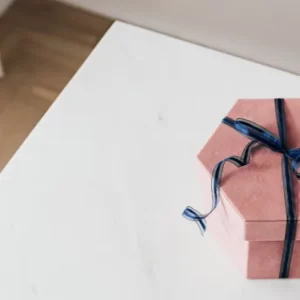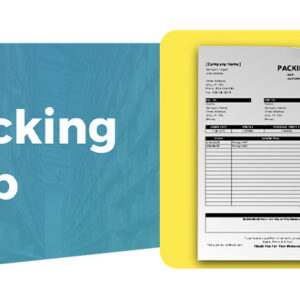Packaging engineers play a very important role in this process, but what exactly do they do?
Packaging engineers are responsible for designing the packaging in a variety of industries, such as food packaging and shipping materials.
If you intend to become a packaging engineer, understanding what is expected of a packaging engineer can be extremely helpful in choosing college courses or internships.
In this article, we discuss what a packaging engineer is, what a packaging engineer does, what skills a packaging engineer uses, and how to become a packaging engineer.
Table of Contents
What is a Packaging Engineer?
A packaging engineer is a type of engineer that specializes in designing effective packaging for a variety of uses, including in the shipping, food and chemical industries.
An engineer can be useful in the packaging design process because these industries demand secure packaging that will last the entire life of the product.
In order to cut down on bulk and unused packaging materials, this can also guarantee that the packaging is as effective as possible.
Also Read: How Many Jobs Are Available In Packaged Foods?
What Does a Packaging Engineer Do?

Packaging engineers design, develop and produce packaging for various types of goods, all while keeping the client’s needs and an efficient use of raw materials in mind. They may also be hired to assist in creating or modifying machinery for use in packaging operations.
Simulated real-world shipping and handling situations are used to conduct packaging testing in a variety of settings. This guarantees packaging toughness to prevent any losses brought on by product damage.
Finally, packaging engineers can focus both on primary packaging, which is closest to the product and designed to appeal to the end consumer, and secondary or tertiary packaging. Although the primary and secondary packaging can be the same, the latter is typically the transportation packaging.
Packaging engineers have a lot of important considerations and factors to take into account at every stage of the process.
Education and Qualifications
Becoming a packaging engineer usually requires a bachelor’s degree in science, engineering, design and/or a related field. In some areas, specific certification may also be required before practicing.
Thinking critically and being able to solve problems are some personal skills you should possess. As you manage multiple projects and interact with a wide range of people during the packaging design and development process, you should also have strong leadership qualities.
In order to advance in your field, some specializations or fields may also encourage you to pursue continuing education throughout your professional life.
How to Become a Packaging Engineer
Becoming a packaging engineer is fairly straightforward and in some ways, requires fewer steps than other types of engineering. Here is how to become a packaging engineer:
1. Finish High School
To become an engineer, you must complete high school or obtain your GED, and you also need to have a bachelor’s degree. Even though it’s not required, knowing your exact career goals in high school can help you start learning the skills you may require.
In high school, if you decide that you want to be a packaging engineer, you can concentrate on developing your advanced math and science abilities. It can be especially beneficial if your school offers courses in computer-aided drafting or other engineering-related topics.
2. Earn a Bachelor’s Degree
In general, if you plan to become a packaging engineer, you want an engineering degree. It’s possible to obtain specialized degrees in packaging engineering, but you can also become one with a degree in a related engineering field. Obtaining a degree that teaches you the abilities you need to design packaging is the most crucial step.
You typically study math, chemistry, engineering, and materials science as part of an engineering degree. Supply chain management, manufacturing, marketing, and economics courses could also be part of a packaging engineering major.
3. Gain Experience in Relevant Areas
You might want to complete one or more internships as you complete your college studies in order to gain experience and learn more about the industry.
You might find that an internship helps you figure out what industry you want to work in because there are numerous industries that require packaging engineers but that have various needs in terms of types of packaging.
Having at least one internship can also help you get a good start on your resume so you can find work after you graduate.
It’s also useful to be aware that, since there isn’t one yet, packaging engineers are not anticipated to or required to obtain a Professional Engineering (PE) license.
While many other types of engineers do require a PE, you won’t need one to work as a packaging engineer. Therefore, prior experience is not necessary to become a licensed engineer but it can help you learn the necessary skills.
4. Decide on An Industry
You are probably ready to start your job search once you have finished your education and have completed one or more internships. You may already have a preference for the kind of packaging you want to engineer based on your research and internship experiences.
If you don’t, it’s acceptable to start in one even if you later decide to switch to another industry. However, if you have a specific preference, you should focus your job search on that field in order to begin your career as a packaging engineer.
5. Join a Professional Organization
It might be a good idea to join a professional organization once you’ve begun working as a packaging engineer or even before you’ve chosen the sector you want to work in.
These organizations offer networking opportunities as well as resources to learn more about the packaging sector.
Institute of Packaging Professionals and Flexible Packaging Associate are a couple of examples of these organizations.
6. Start With Entry-level
You don’t start out as a full-fledged engineer right away if you’re like most packaging engineers. Before being promoted to packaging engineer, you might need to work in support or associate packaging engineer positions.
This may be the case even if you have extensive internship experience, as employers may want to gauge your performance before deciding whether you have what it takes to engineer packaging on your own.
Conclusion: What is Packaging Engineer
Designing packages with both form and function in mind, highly qualified packaging engineers pay attention to the critical details that end users appreciate, yet often take for granted.
Their expertly created packaging is also essential to the entire supply chain.
FAQs
What Exactly Does a Packaging Engineer Do?
Packaging engineers design and develop packaging solutions for a variety of products using various materials.
Is a Packaging Engineer a Real Engineer?
A packaging engineer is a type of engineer that specializes in designing effective packaging for a variety of uses, including in the shipping, food and chemical industries.
Is Packaging Engineering Hard?
Yes, packaging engineering is hard. The training to become a packaging engineer is difficult, just like in all engineering fields.





